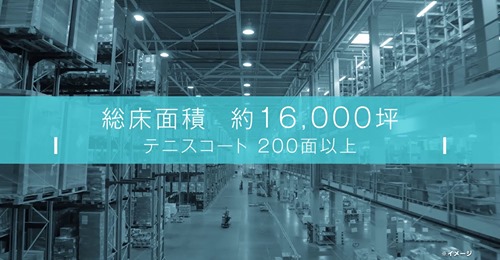
1. Fundamentals of Heat Generation
Arc welding relies on an electric arc struck between an electrode and the workpiece to generate intense, concentrated heat for fusion. In contrast, gas welding (oxy-fuel welding) burns a fuel gas (e.g., acetylene) mixed with oxygen to produce a flame that melts the base and filler materials.
2. Heat Source Characteristics and Temperature Profiles
-
Arc Welding
-
Heat source: Electric arc (DC or AC)
-
Arc temperature: 5 000–6 500 °C
-
Heat density: Very high, localized
-
-
Gas Welding
-
Heat source: Combustion flame (acetylene + O₂)
-
Flame temperature: 3 200–3 600 °C
-
Heat density: Lower, broader footprint
-
High arc temperatures translate into deeper penetration and narrower heat-affected zones (HAZ), while gas welding yields shallower fusion and wider HAZ.
3. Equipment Components and Setup
| Component | Arc Welding | Gas Welding |
|---|---|---|
| Power source | Welding power supply (transformer/inverter) | None |
| Electrodes/filler | Consumable rods (SMAW/MIG) or non-consumable tungsten (TIG) | Filler rods (solid or cored) |
| Shielding | Flux coating or inert gases (Ar, CO₂) | Flame chemistry regulates oxidation |
| Torch/mouthpiece | Welding gun or electrode holder | Oxy-fuel torch with mixing chamber |
| Gas cylinders | Protective gases (for MIG/TIG only) | Oxygen and fuel gas (e.g., acetylene) |
| Safety gear | Welding helmet, fume extraction, gloves | Goggles, flame-resistant clothing, gloves |
Controlling heat input (HI) is critical for microstructure and distortion. HI for arc welding is calculated as:
Where
-
V: arc voltage (V)
-
I: current (A)
-
S: travel speed (mm/min)
-
\eta: process efficiency (typically 0.6–0.8 for SMAW/MIG)
Gas welding heat input is governed by flame setting and torch speed, lacking a direct electrical formula but adjustable via oxygen/fuel ratio and torch travel.
5. Weld Pool Dynamics and Metallurgical Effects
-
Penetration and Fusion Arc welding’s high heat density yields deep fusion and a narrow weld bead. Gas welding produces a wider, shallower weld pool with slower solidification.
-
Heat-Affected Zone (HAZ) Arc welding’s narrow HAZ concentrates microstructural changes (grain coarsening) over a small region. Gas welding spreads heat, enlarging the HAZ and raising distortion risk.
-
Microstructure Rapid cooling in arc welds can form martensitic or fine bainitic structures in steels. Gas welds cool more slowly, promoting coarser ferrite–pearlite mixtures.
6. Electrode and Filler Material Selection
-
Arc Welding
-
SMAW: Rutile or basic electrodes for mild/low-alloy steel
-
MIG/TIG: Solid wires or rods—SS316, ER70S-6, ER4043 (Al)
-
Flux-cored: High-strength or all-position applications
-
-
Gas Welding
-
Solid rods: ER70S-2 for mild steel; ER4043 for aluminum
-
Bronze/copper-silicon for brazing steel
-
Flux-coated rods to improve wetting and slag control
-
Filler choice impacts weld chemistry, mechanical properties, and susceptibility to defects.
7. Shielding, Flux, and Oxidation Control
-
Arc Welding uses inert (Ar, He) or active (CO₂) shielding gases, or flux coatings, to exclude atmospheric nitrogen and oxygen—preventing porosity and embrittlement.
-
Gas Welding Flame provides limited protection; neutral flames (1:1 O₂:C₂H₂) minimize oxidation, but fore- or oxidizing flames adjust penetration and flame chemistry.
8. Mechanical Properties, Defects, and Quality Control
| Aspect | Arc Welding | Gas Welding |
|---|---|---|
| Tensile strength | Often > 450 MPa with proper electrodes | Typically 350–450 MPa |
| Common defects | Porosity, undercut, lack of fusion | Incomplete fusion, slag inclusion, oxidation |
| Distortion risk | Lower (narrow HAZ) | Higher (wider HAZ) |
| Residual stress | Concentrated; may require PWHT | Distributed; often self-relieves |
Non-destructive testing (UT, radiography) and post-weld heat treatment (PWHT) are more common in arc-welded structures.
9. Application Domains
-
Arc Welding:
-
Structural steel fabrication (beams, columns)
-
Shipbuilding, pipelines, pressure vessels
-
Automotive frames (MIG), aerospace components (TIG)
-
-
Gas Welding:
-
Sheet metal repairs, HVAC tubing
-
Brazing and soldering light alloys
-
Field repairs where power is unavailable
-
10. Safety and Environmental Considerations
-
Arc Welding
-
Hazards: UV/IR radiation, ozone, metal fumes
-
Controls: Helmets with auto-darkening filters, ventilation, respirators
-
-
Gas Welding
-
Hazards: Fire/explosion (gas leaks), CO exposure
-
Controls: Flashback arrestors, proper cylinder storage, flame-resistant PPE
-
11. Productivity and Cost Factors
-
Equipment Investment
-
Arc rigs (inverter-based): $1 500–$5 000
-
Oxy-fuel setup: $300–$1 200
-
-
Deposition Rate
-
MIG: up to 10 kg/hr
-
Gas welding: ~2 kg/hr
-
-
Operating Costs
-
Electricity vs. fuel gas consumption
-
Consumables pricing (electrodes vs. rods and flux)
-
12. Method Selection Criteria
-
Material Type & Thickness
-
Required Weld Strength & Toughness
-
Distortion Tolerance
-
Mobility & Field Conditions
-
Operator Skill Level
-
Cost & Throughput Targets
Conclusion
Arc welding and gas welding each excel in specific niches. Arc welding delivers high-strength joints, deep penetration, and high productivity for thick metals under controlled conditions. Gas welding remains invaluable for thin sections, on-site repairs, and brazing operations where power access is limited. Selecting the optimal method hinges on balancing metallurgical requirements, mechanical performance, cost, and environmental constraints.
QTE Technologies offers a wide range of welding machines from renowned brands. We are an international MRO provider proudly serving customers in over 180 countries. Established in 2010, we supply over 1 million products across every industry and engineering discipline. Additionally, you can reach us anytime via 24×7 chat support, phone, WhatsApp or email. Discover what our valued customers have to say about our services on our dedicated review page.
Post Author By QTE Technologies Editorial Staff (with a solid background in both technical and creative writing - accumulated 15+ years of experience).




